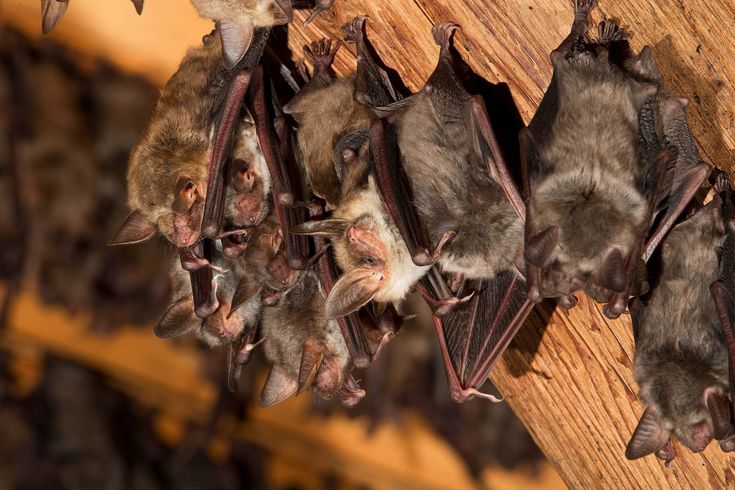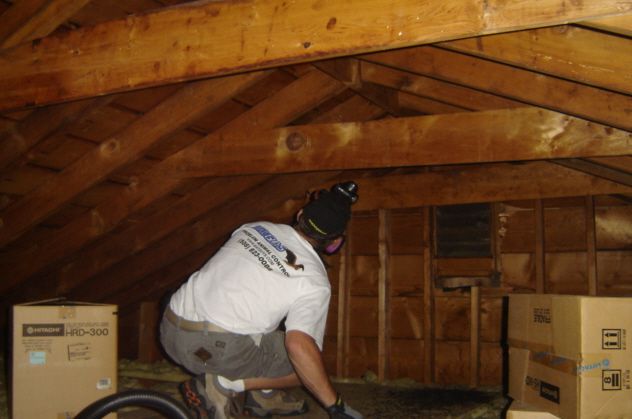Bat Removal: Safe and Humane Solutions
Bats are essential contributors to healthy ecosystems. They help control insect populations, pollinate plants, and even support reforestation by dispersing seeds. However, when bats find their way into homes or buildings, they can quickly go from helpful to hazardous. In such cases, bat removal becomes necessary to protect both human health and property while ensuring the humane treatment of these misunderstood creatures.
Bats are not aggressive by nature. Most are shy and nocturnal, preferring to roost in dark, quiet areas where they won’t be disturbed. When they enter buildings, it’s typically to seek shelter from harsh weather or to raise their young in a safe, enclosed space. Attics, chimneys, wall voids, and crawl spaces often provide ideal conditions for roosting. Small entry points, such as gaps under eaves or holes around vents, can be all a bat needs to gain access.
The presence of bats inside buildings poses both structural and health-related concerns. While bats themselves are not inherently dangerous, their droppings—known as guano—can accumulate rapidly and create serious sanitation issues. Guano can harbor fungal spores that lead to histoplasmosis, a potentially severe respiratory illness. In addition, although rare, bats may carry rabies, and any close interaction or accidental contact can present a health risk.
Bat removal requires a careful and knowledgeable approach. Unlike pests such as rodents or insects, bats are protected by wildlife conservation laws in many countries, and harming them can lead to legal consequences. More importantly, ethical removal ensures that no bats—especially young pups—are harmed or trapped inside during the process. Modern methods focus on exclusion rather than extermination, using devices that allow bats to exit a structure but prevent them from re-entering.

Removing bats is only part of the solution. Once they are gone, homeowners must take steps to seal all possible re-entry points and sanitize any affected areas to remove health hazards and odors. This is why relying on professional wildlife control experts is highly recommended. These specialists have the tools, knowledge, and legal clearance to conduct safe, compliant, and effective bat removal services.
This article will explore why bats invade human structures, the potential risks of living with bats, and the best humane removal techniques. We’ll also cover how to prevent future infestations and when to call in the experts. By understanding the right way to approach bat removal, homeowners can protect their families, maintain their property, and support the conservation of one of nature’s most beneficial mammals.
Why Do Bats Enter Homes?
Bats do not enter homes to cause harm. Instead, they are looking for safe, dark, and undisturbed places to rest or raise their young. Human structures—especially older buildings—often provide ideal roosting spots such as attics, chimneys, wall gaps, and eaves. These areas mimic natural cave-like environments that bats would typically seek in the wild.
Small openings as narrow as a quarter of an inch are enough for bats to squeeze through. Common entry points include broken vents, loose roof tiles, chimney caps, and soffits. During seasonal migrations or breeding seasons, bats may actively search for secure shelter, increasing the chance of entering human dwellings. Once a colony establishes itself, it may return to the same location year after year unless removed and sealed out.

Health and Property Risks of Bat Infestation
While bats are not aggressive and rarely attack humans, their presence in enclosed environments can pose serious problems. One major concern is the accumulation of bat droppings, or guano. Over time, guano can create a strong, unpleasant odor and serve as a breeding ground for a fungus that causes histoplasmosis—a lung infection that affects people exposed to contaminated dust, particularly in poorly ventilated spaces like attics.
Another health risk is rabies. Although only a small percentage of bats carry rabies, the risk remains, especially if a person or pet comes into direct contact with a bat. Because bat bites are small and can go unnoticed, any contact should be treated seriously and reported to health authorities.
Beyond health risks, bat guano and urine can damage insulation, wooden beams, and drywall. Guano is acidic and may corrode metal and masonry over time. Infestations can also attract insects such as mites, fleas, and beetles, which feed on organic waste or use bats as hosts. If left unaddressed, a bat colony can lead to significant repair costs and create persistent indoor air quality issues.
Humane and Legal Bat Removal Methods
Bat removal must be handled ethically, especially since bats are protected in many regions due to their ecological importance. The most widely accepted method for removing bats is exclusion. This involves installing one-way exclusion devices at active entry points. These devices allow bats to exit but prevent them from re-entering the structure.
Before exclusion begins, the building must be thoroughly inspected to identify all points of entry and to ensure no bats—particularly pups—are trapped inside. Exclusion should never be done during maternity season (typically spring and early summer) when baby bats are not yet able to fly. Performing exclusion during this period could lead to the death of young bats and is illegal in many areas.
Once all bats have safely exited the building through the exclusion devices, all access points must be sealed permanently. Materials like heavy-duty mesh, metal flashing, and sealants can be used to block even the smallest gaps. Ensuring a complete seal is crucial to prevent re-entry in the future.

The Importance of Professional Bat Removal Services
While some homeowners attempt DIY bat removal, professional help is strongly recommended. Certified wildlife control experts are trained to handle bats safely, legally, and effectively. They have access to proper equipment, including ladders, safety gear, and exclusion tools that may be impractical or dangerous for untrained individuals to use.
Professionals begin with a full property inspection to locate entry points and signs of bat activity. They can then design a customized exclusion plan that adheres to local laws and conservation guidelines. After the bats are excluded, they also handle guano cleanup and disinfect affected areas to eliminate health risks and odors. This step is critical to restoring air quality and ensuring that insect pests do not linger.
Furthermore, specialists can offer long-term prevention tips and even install bat houses away from the structure to give bats a safe alternative roosting location. This approach protects both the homeowner’s property and the local bat population.

How to Prevent Bats from Returning
Successful bat removal must be followed by thorough prevention efforts. Sealing the building is the first step. This means closing all cracks, vents, holes, and openings that are larger than ¼ inch in diameter. Vent covers, chimney caps, and mesh screens are effective barriers when installed properly.
Routine inspections—especially before and after migration seasons—are vital to maintaining a bat-free home. Homeowners should watch for signs such as scratching noises in walls, staining near rooflines, or sightings of bats at dusk. It’s easier to manage a small issue early than a full-blown infestation later on.
In addition, keeping outdoor lighting minimal near entry points can reduce insect populations, which in turn makes the building less attractive to bats seeking food. Encouraging bats to roost elsewhere can be done by installing bat houses on nearby trees or poles. These structures offer a safe, designated space for bats while keeping them out of living areas.
Conclusion
Bats are incredibly valuable to the environment, but their presence inside human structures creates a unique set of challenges. When they roost in attics, walls, or chimneys, it can lead to health risks, structural damage, and understandable concern from homeowners. Fortunately, with the right knowledge and approach, bat removal can be accomplished safely, humanely, and effectively.
It’s important to remember that bats are not our enemies. On the contrary, they are natural allies in insect control and pollination. Their entry into homes is usually accidental, driven by instinct and survival rather than aggression. This understanding forms the foundation of responsible bat removal: protect your home without harming the species that serve such a critical role in biodiversity.
Attempting to remove bats without professional help can be dangerous and ineffective. Untrained individuals may miss hidden entry points, disturb young bats, or unintentionally break conservation laws. Moreover, improper removal techniques could trap bats inside, worsening the problem and leading to tragic outcomes for both the bats and the residents. Professional bat control experts not only ensure legal compliance but also offer a higher success rate, complete with post-removal sanitation and long-term prevention solutions.
Balancing Human Safety and Wildlife Conservation
The success of any bat removal plan depends on striking the right balance: safeguarding people and property while respecting the protected status of these nocturnal creatures. Ethical exclusion techniques, thorough inspections, and targeted sealing of access points allow this balance to be achieved. When done correctly, no bats are harmed, no young are left behind, and homeowners regain peace of mind.

In many regions, bats are under pressure from habitat loss, climate change, and disease. Encouraging safe coexistence through measures like installing bat houses, preserving natural green areas, and minimizing unnecessary lighting helps support local bat populations. These proactive efforts complement removal strategies by offering alternative shelters and reducing the risk of re-entry into buildings.
Whether you’re a homeowner, property manager, or simply someone concerned about animal welfare, learning about the right way to handle bat invasions is crucial. It’s not just about fixing a temporary problem—it’s about long-term awareness, sustainable solutions, and acting in accordance with both ethical and environmental standards.
Taking Action the Right Way
If you suspect a bat infestation in your home, don’t panic—and don’t act rashly. The first step should always be to contact a licensed bat removal specialist who can assess the situation and create a step-by-step removal and prevention plan. Avoid sealing exits or attempting to trap bats without guidance. Instead, trust professionals who follow proven techniques and respect conservation laws.
Post-removal, make sure to inspect and maintain your building regularly. Schedule seasonal checks for cracks, broken vents, or unsealed gaps, and keep an eye out for new signs of bat activity. With consistent effort, it’s entirely possible to prevent future infestations and maintain a safe and healthy living environment.
Ultimately, bat removal is not just about protecting homes—it’s about creating harmony between humans and nature. These creatures may be mysterious and sometimes misunderstood, but with patience, education, and compassion, we can ensure that bats thrive in the wild, not in our walls.
Learn more about humane bat removal methods at Bat Conservation International.






